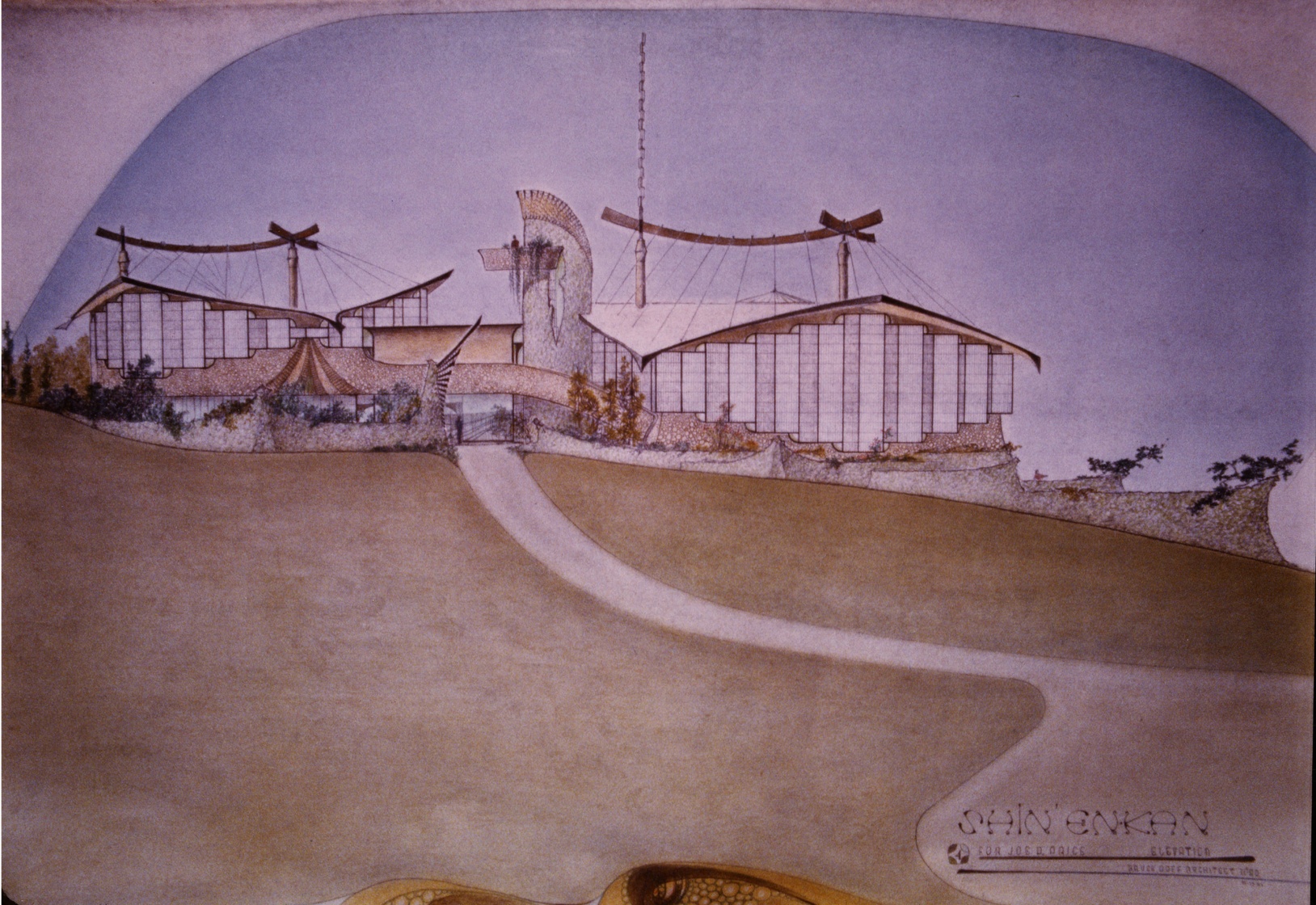Necessary Demolition | LACMA

This week Peter Zumthor’s proposed redevelopment of the entire LACMA campus goes on display at the museum. The undulating, single-story building would necessitate the demolition of almost all of the existing LACMA buildings, save for Renzo Piano’s Broad Contemporary Art Museum (2008) and Resnick Pavilion (2011), and also Bruce Goff’s Pavilion for Japanese Art (1988).
Establishing which buildings must stay was probably an easy process. Piano’s buildings are so new that their destruction would be lunacy. And Goff’s fantastical landmark, though not universally loved, has many more devotees than detractors.
Looking at Zumthor’s restrained and grave designs, I wondered whether the Swiss architect harbors resentment towards Goff’s building. It is an exuberant folly, a jumble of Googie angles and irreverent references to Japanese art. The Los Angeles Times, in 1988, compared it to “a pterodactyl perched on a sinuous space station” and to a Samurai warrior’s helmet.
There may, however, be greater affinities between the two architects than meet the eye. Both subscribe (or subscribed, in the case of Goff, who died in 1982) to the notion that a building is a servant to its context. Zumthor aims for cohesion with a site’s geological attributes—in LACMA’s case, with the La Brea Tar Pits. Goff was less interested in what was outside his buildings as in what was inside; the project’s patron, Joe Price, referred to the client as “the art itself.” Nevertheless, despite their mutually proclaimed ideological humility, neither is shy of making bold authorial statements.
Above: Bruce A. Goff, Shin’enkan Museum, 1980 (Later Pavilion for Japanese Art, Los Angeles County Museum of Art, completed 1988). Bruce A. Goff Archive, Ryerson and Burnham Archive, The Art Institute of Chicago.